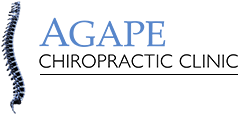section-02280fe
What Type of Headache Do You Have?
 Bottom Line:
Bottom Line:
Headaches are experienced a little bit differently by everyone. You may feel tired, have blurred vision, a stiff neck, or feel as if you’re unable to function for the day. But they do all have one thing in common – they are not “normal” to deal with frequently.
Why it Matters:
There are many different types of headaches and knowing which one you have is the first step towards finding relief. Here are a few of the most common headache types:
Migraine: Migraines come in all shapes and sizes. Typically, you’ll feel a throbbing on one side of your head. This type of headache can be incredibly painful and can last up to 3 days. You may feel nauseous, have difficulty speaking, or even be sensitive to light, sound, or smell.
Tension Headache: Tension headaches are very common and may affect up to 20% of the population. They usually consist of a constant dull pain that is felt on both sides of the head. Stress, anxiety, or depression are a few of the triggers for a tension headache. You could also get them from dehydration, loud noises, lack of sleep, or even by not getting enough exercise. In short, living a healthy lifestyle is a great way to get rid of tension headaches.
Cluster Headache: Cluster headaches are usually experienced more by men than by women. You will generally feel an intense burning or even a piercing feeling behind or around one of your eyes. These types of headaches usually come when you least expect them and can last anywhere between 15 minutes to three hours.
Next Steps:
If you’re having trouble with migraine, tension, or cluster headaches, make sure to consult with our healthcare team. Did you know research has shown and continues to show that Chiropractic care can reduce the intensity, severity, and frequency of many common headaches… all without the need for medications. Think about that the next time you find yourself dealing with one too many headache episodes. We’re here to help!
Science Source(s):
US National Library of Medicine. MedLine Plus. Tension Headache. 2019
section-3845968
The Link Between Stress & Headaches
 Bottom Line:
Bottom Line:
Are you feeling rushed? Are you dreading a big meeting at work? These events can all add up to the start of a headache. Often, it’s not the event itself that results in a headache, but rather, your body’s reaction to stress. If you cope by clenching your jaw or tensing your muscles, you may be more likely to experience headaches as a result.
Why it Matters:
Episodic headaches, or those that occur sporadically, are often triggered by isolated, stressful incidents, while chronic headaches typically happen because of daily, constant stress. A few of the most common everyday stress triggers include relationship troubles, anxiety, poor sleep habits, or significant life changes.
Tips for Reducing Stress
Exercise More: Regular exercise boosts endorphins, which help put you in a better mood. It also increases energy and helps take the focus off the events that are stressing you out.
Get Some Sleep: Aim to get at least 8 hours of sleep each night. Falling asleep at the same time every night and getting up at the same time each morning will help you fall into a healthy sleep pattern.
Relax: Make time for relaxation techniques that help you feel calm during periods of high stress. Meditation and yoga are just two techniques that can help you feel relaxed and collected under pressure and help mitigate the onset of stress.
See a Chiropractor: Keeping your spinal joints moving correctly can reduce the strain on your spine and it’s supporting muscles. Chiropractic care can help you relieve pent up stress in your body and get you feeling better quickly.
Next Steps:
So, can stress cause headaches? Yes. While there is a link between stress and headaches, now you know there are ways to relieve it. When you feel the stressors of your daily life start to add up, take a moment to practice some relaxation techniques and make sure you get in some exercise. Use preventive measures like eating well and getting better sleep. And be sure to make time to see your Chiropractor to keep your body relaxed and stress-free.
Science Source(s):
Sleep and Migraine: Assessment and Treatment of Comorbid Sleep Disorders. Headache 2018
section-8702f34
The Benefits of Chiropractic Care for Daily Headaches
 Bottom Line:
Bottom Line:
It’s estimated that half of the world’s adult population struggles with headaches at least once a year. These headaches can cause pain and disability which can affect your quality of life. But… why live with daily headaches when you can ease them away?
Why it Matters:
A quick visit to a Chiropractor can provide you with the care you need. Chiropractors can help relieve headaches in many ways. Here are just a few:
1. Exploring Your History: During your initial assessment, your Chiropractor will perform a comprehensive history and examination. This assessment allows them to determine if your symptoms are from spinal issues or something else. They’ll also rule out other possible causes for your daily headaches as well as potential triggers. For example, diet, alcohol, or stress might contribute to your frequent headaches.
2. Chiropractic Adjustments: New studies have shown that Chiropractic care can help improve headache pain. Chiropractors are highly trained in spinal manipulation and adjustments. They use their hands to apply a small force to a specific spinal joint. When the force is applied, you might hear a slight pop, and even some people feel immediate relief!
3. Exercises: Deep neck flexor exercises are also great for treating cervicogenic headaches. You can also ask your Chiropractor about active care techniques and exercises. Using these techniques at home can help you ease your headaches between your appointments.
Next Steps:
It’s time to bring an end to that throbbing in your head. With Chiropractic care, you can ease your daily headaches starting today and live a pain-free life. When is your next adjustment?
Science Source(s):
Evidence-based guidelines for the chiropractic treatment of adults with headache. JMPT 2011
section-1bd1ad9
Relieving Migraine Headaches
 Bottom Line:
Bottom Line:
Not many things can ruin your day like a bad headache. It seemingly comes out of nowhere, sometimes teasing its arrival with symptoms like vision changes and nausea. This is one visitor you don’t want to stick around!
Why it Matters:
There are typically four phases of a migraine that many sufferers will experience:
Premonitory: This phase is usually the warning that a migraine is coming on. Many people will experience symptoms like mood swings, neck stiffness, and constipation.
Aura: Another sure sign that a migraine is coming is an aura. Migraine sufferers often report visual or sensory disturbances in the minutes before the actual headache. Visual auras can result in flashing lights and blurred vision, whereas sensory auras affect speech and the ability to think clearly.
Headache: The pain of a migraine headache can be moderate or severe, like the headache types discussed earlier. A migraine headache is likely to occur on only one side of the head. Migraine sufferers will notice that their headache gets worse with physical activity, so rest is critical.
Postdrome: The final phase in the migraine cycle is the postdrome. This occurs once the headache ends and leaves the afflicted person feeling exhausted. While the causes of migraines are unclear, there are specific triggers that are often attributed to their onset, including alcohol and depression. Interestingly, women are also more likely to experience migraines than men.
Next Steps:
While there are differences between migraine and tension headaches, regardless of which you’re suffering from, there are ways to relieve the pain. Migraines sufferers do well with preventive measures such as diet changes or taking steps to reduce stress. Another effective way to prevent headaches and migraines is with Chiropractic care, so you’ve come to the right place!
Science Source(s):









